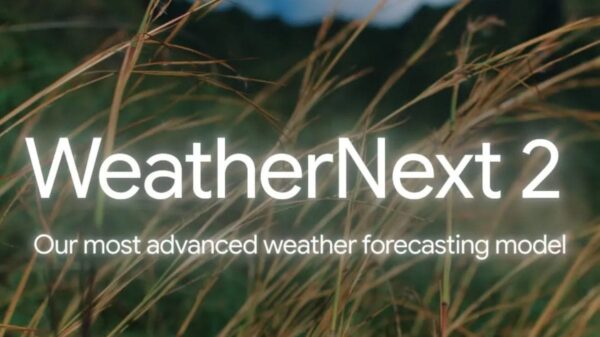In a notable advancement for both researchers and everyday users, Google DeepMind has unveiled its latest weather forecasting model, WeatherNext2. This innovative model builds on the existing GenCast framework, providing rapid predictions with significantly enhanced resolution. As the tech giant continues to push the boundaries of technological innovation, WeatherNext2 represents a significant leap in AI-driven meteorology.
Overview of WeatherNext2
WeatherNext2 is designed to deliver precise weather forecasts across various platforms, including Google Earth Engine, BigQuery, and Google Cloud’s Vertex AI. This integration is part of an early access program by Google DeepMind, aiming to democratize weather data access. Already, WeatherNext2 is powering features on Google Search, Pixel Weather, Gemini, and Google Maps Weather API, allowing users instant access to detailed weather forecasts.
Enhanced Performance
According to Google DeepMind, WeatherNext2 operates at a remarkable pace, offering predictions that are eight times faster than its predecessor. The model generates hourly forecast resolutions and can simulate hundreds of weather scenarios, providing timely updates in under a minute using just one Tensor Processing Unit (TPU). This level of precision marks a significant improvement in the field of weather forecasting, where quick and accurate data is crucial.
Innovative AI Features
WeatherNext2 utilizes a unique Functional Network architecture, enabling it to produce multiple realistic weather scenarios instead of a single forecast. This capability enhances its predictive accuracy, boasting performance that surpasses GenCast in 99.9% of cases for forecasts extending up to 15 days. The advancements brought by this model not only set a new standard for meteorological predictions but also demonstrate the potential of AI in enhancing everyday applications.
See also Sundar Pichai Urges Caution with AI Tools, Warns of Potential Industry Bubble
Sundar Pichai Urges Caution with AI Tools, Warns of Potential Industry BubbleThe implications of WeatherNext2 extend beyond mere accuracy; they represent a shift in how users interact with weather data. By integrating sophisticated AI technologies into commonly used platforms, Google DeepMind is making detailed meteorological information more accessible, promoting better preparedness and informed decision-making for both individuals and communities.
As AI continues to reshape various industries, the introduction of models like WeatherNext2 underscores the convergence of artificial intelligence and practical applications. This development not only enhances the accuracy of weather forecasting but also highlights the broader potential of AI technologies in tackling complex real-world challenges.
In conclusion, with WeatherNext2, Google has not only improved the speed and accuracy of weather forecasts but also set a precedent for future innovations in AI-driven solutions. As this technology continues to evolve, it opens up new possibilities for how we understand and respond to the ever-changing climate.







































































